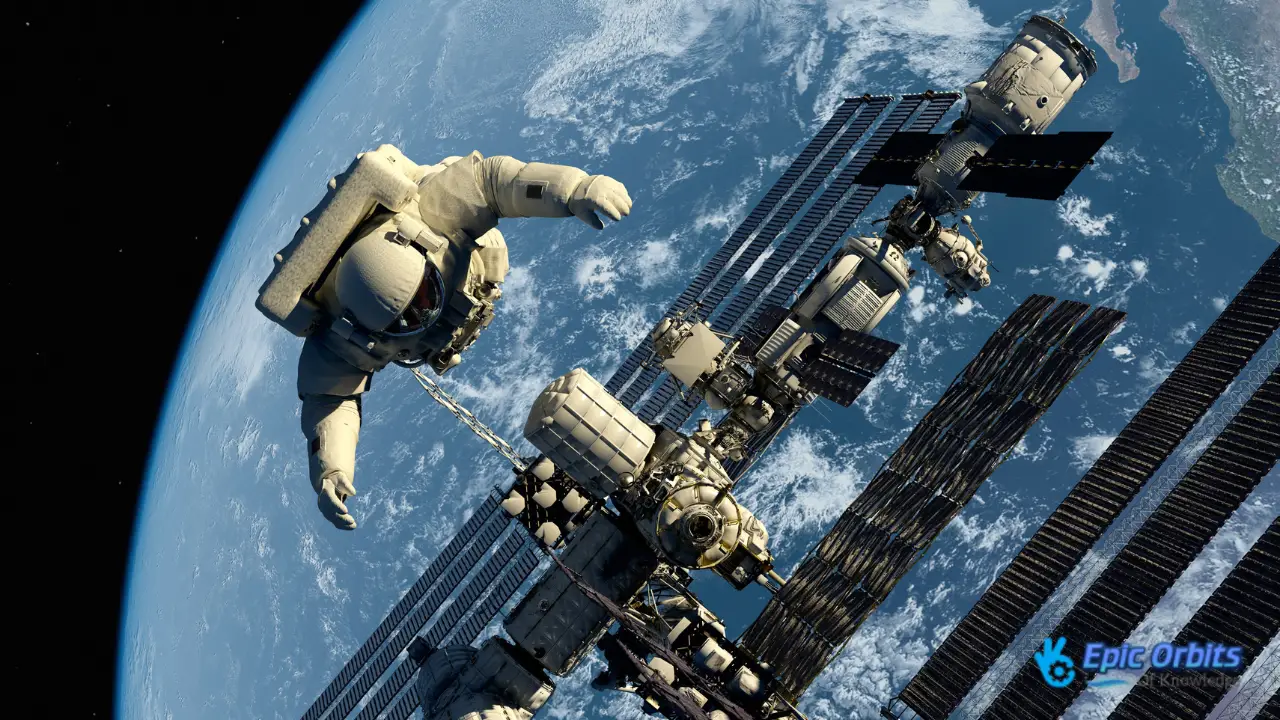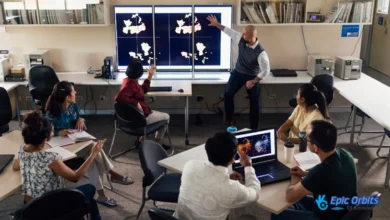How Advances in Technology Are Enabling Space Travel
Discover the future of space travel in our ultimate guide. Learn how advances in technology are making space exploration a reality.

The universe is no longer a far-off fantasy; it is now a real frontier. There are already more than 4,000 exoplanets known, making it possible to explore outside our solar system.
People's interest in the sky has led to new ideas that have made space exploration more accessible and less government-directed. Improvements in technology have been crucial since they have improved spacecraft support systems.
It's evident that technology will continue to play a big part in how we explore space as we enter a new age of space exploration.
How Space Travel Technology Has Changed Over Time
The tale of how space flight technology has changed throughout time is one of new ideas and hard work, all in the sake of exploring the atmosphere and beyond. From the early rocketry tests to today's advanced spacecraft, this voyage has had many important stops along the way.
The first rockets that could go vast distances were made in the 1930s and 1940s. The V-2 rockets from Nazi Germany were among the first to reach the edge of space. These advancements paved the way for the emergence of new technologies following the war. Wernher von Braun, a pioneer in rocket technology, once stated,
“The rocket worked perfectly, except for landing on the wrong planet.”
This phrase sums up the problems that early rocket scientists had to confront and the accuracy that space travel needs.
The launch of Sputnik 1, the first artificial satellite, on October 4, 1957, and Yuri Gagarin's historic orbit of Earth on April 12, 1961, are two important events. Thereafter, the US sent Explorer 1 into space, and Alan Shepard made his first spaceflight as an American. These accomplishments signaled the start of the space age, with each mission pushing beyond what was considered feasible. The Apollo program sped things up even further, and in the end, it led to a lunar landing, which showed how smart people are and how quickly space technology has come forward over the years.
New Propulsion Systems
Revolutionary propulsion technologies are the key to the future of space travel. As we keep pushing the limits of space travel, it becomes more and more important to have propulsion systems that are more efficient, powerful, and dependable.
Chemical propulsion has made a lot of progress from the early days of space travel. Modern chemical propulsion systems have advanced significantly to maximize thrust while using minimal fuel. A top aerospace engineer says, “The improvements in chemical propulsion have been key to getting the accuracy needed for today's complicated space missions.”
Ion thrusters and electric propulsion systems are far more efficient than chemical propulsion systems. These technologies provide spacecraft a greater specific impulse, which lets them go faster for longer periods of time. This technique is very advantageous for voyages to deep space when saving fuel is crucial.
Nuclear propulsion is a promising field of study that might change space travel forever by making it much faster to go to distant planets. Even if there are certain problems with nuclear propulsion, the possible advantages make it an intriguing and useful field to look into.
As we keep working on these groundbreaking propulsion technologies, we move closer to making long-term space trips a reality. The progress made in propulsion technology is crucial for the success of future space missions.
New materials science discoveries that can help space travel
New discoveries in materials science are making it possible to explore new areas of space flight. We need materials that can withstand the severe temperatures, radiation, and other harsh conditions of space.
Heat-resistant materials have undergone significant changes since the early days of space travel. Contemporary thermal protection technologies enable spacecraft to safely return to Earth's atmosphere. These improvements have been crucial for the success of several space missions.
The use of lightweight composite materials has revolutionized the construction of spaceships. Engineers can cut launch costs and increase fuel economy by making spaceships lighter. Such innovation has made it possible for more ambitious space missions and has helped commercial space enterprises grow.
Cosmic radiation is a big problem for space missions that last a long time. New ways to guard against radiation are essential for keeping astronauts and electrical equipment safe. People are working on new materials and designs that will give adequate shielding without making things too heavy or expensive.
Materials science is improving space satellite technology by helping us learn more about space and gather more data.
Technologies for Life Support and Habitats
Space is a very hostile place; therefore, we need new ways to keep people alive there. This has led to the creation of cutting-edge technology for life support. As we go farther into space, the need for solid life support systems becomes more and more important.
Closed-loop environmental control systems are one of the most important new technologies in life support. These systems recycle air, water, and trash, which means that resupply trips are less necessary. The International Space Station, for example, has systems that can recycle water from different sources, such as urine and condensation.
Another area of study that seems promising for long-term trips in the future is growing food in space. NASA has tried to cultivate lettuce and other vegetables aboard the International Space Station. These tests make it possible to build more complicated farming systems that might keep personnel alive on voyages to Mars and beyond.
For long space missions, protecting against radiation is an important part of life support systems. Scientists are working on ways to protect astronauts from dangerous radiation from the sun and space. This involves new designs for habitats and materials that may block radiation well.
These improvements in life support and habitat technology not only make it easier for people to explore space, but they also help the Earth stay healthy. We may make our environmental impact at home better by making systems that can recycle resources and cut down on trash.
Communication and navigation systems for space travel
As space missions become more ambitious, it's more important than ever to have dependable communication and navigation systems. As we go farther into space, we need more sophisticated technology that can let us talk to each other over long distances and find our way through the complicated parts of it.
NASA's Deep Space Network has changed a lot and can now pick up weak signals from the end of our solar system. The huge distances involved in deep space missions delay contact with Earth, making this progress crucial.
Laser communication technologies promise to change the way data is sent from space, making it faster than existing techniques. This technique might make communication for future space missions quicker and more dependable.
Scientists are striving to enable spaceships to navigate autonomously, eliminating the need for constant human supervision. This technique is crucial for missions that last a long time and can't talk to Earth in real time.
| Technology | Description | Benefit |
| Deep Space Network | Advanced radio dishes for deep space communication | Receives faint signals from distant spacecraft |
| Laser Communication | High-speed data transmission using laser technology | Increases data transmission rates significantly |
| Autonomous Navigation | Spacecraft navigation without human intervention | Enables long-duration missions without real-time Earth communication |
The private sector is changing the way people travel in space.
The private space sector is changing the way we travel in space. Companies like SpaceX and Blue Origin are leading the way in making it easier to go to space.
Reusable rocket technology is one of the most important new things. SpaceX was the first to use this technology, which has greatly lowered the cost of launching things into space. This technology has made space more accessible for both business and research missions. SpaceX has turned what used to be a very costly procedure into one that is cost-effective by collecting and repairing rocket boosters.
It's also thrilling that commercial space stations and space tourism are starting to happen. Companies are already aiming to provide suborbital flights and even luxury orbital hotels. This might lead to a new economy that could compete with conventional tourism. “SpaceX is trying to make humanity a multi-planetary species,” Elon Musk previously declared. This dream is progressively coming true.
“The future of space travel isn't just about getting to orbit; it's about making space available to everyone.”
Public-private collaborations are also crucial for speeding up new ideas in space exploration. NASA's collaboration with private enterprises has revolutionized space missions, positioning NASA as a savvy consumer of commercial services. This shift has sped up technological advancement and introduced fresh approaches to space exploration.
| Company | Innovation | Impact |
| SpaceX | Reusable Rockets | Reduced launch costs |
| Blue Origin | Suborbital Flights | Space tourism |
| NASA | Public-Private Partnerships | Accelerated innovation |
The Future of Technology for Space Travel
Innovation and curiosity are about to change space flight technology in a big way. As we keep pushing the limits of space exploration, several important regions are starting to stand out as places where we should focus our efforts.
NASA's plans to take people to Mars in the 2030s are pushing space technology to new heights. The Curiosity Rover has been very helpful in collecting information on radiation on Mars, while the MARS2020 Rover is looking at the availability of oxygen and other resources. These missions are crucial for getting people to Mars.
People are looking at the idea of traveling between stars, even though Mars is the main emphasis right now. We are getting closer to the stars by contemplating things like nuclear pulse propulsion and light sails driven by enormous lasers. As
“The universe is a massive place.” It seems like a tremendous waste of space if it's just us.
Space exploration has resulted in the development of several new technologies that have practical applications on Earth. We are now employing technologies developed for space flight in medicine, energy, and environmental protection, thereby improving life. We should anticipate seeing even more advantages here on Earth as we keep coming up with new ideas for space technology.
Conclusion
As we finish our trip across the enormous world of space technology, it's evident that the future of space travel is brighter than ever. People can now begin exploring the solar system and the rest of the cosmos, observe things and events from unique perspectives, and utilize the resources and features of space to their advantage thanks to spaceflight.
The convergence of various technical fields such as propulsion, materials, life support, communication, and commercial innovation is creating unprecedented opportunities that surpass their individual contributions. The speed of space technology development is picking up, with major advances occurring in years instead of decades. This rapid progress is assisting us in addressing long-standing questions about our place in the universe, and it appears that it will continue to expand our capabilities in the future.
It's clear that space technology will continue to be important in helping us learn more about the cosmos as we look forward to further launches and exploration. The most intriguing new things could be the ones we haven't thought of yet. The future of space travel is going to be just as interesting as it is unexpected, given the rate at which things are moving now.



